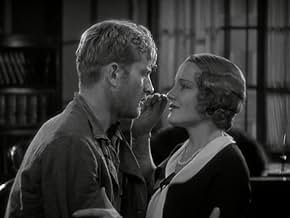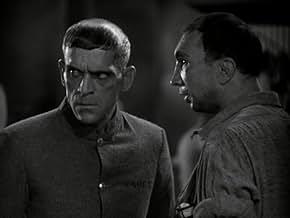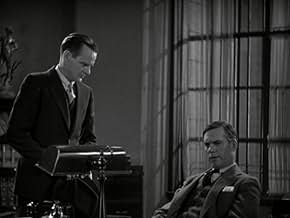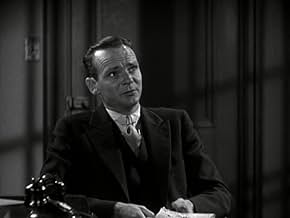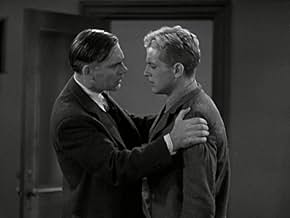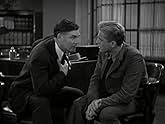Nach einem gescheiterten Versuch, für das Gouverneursamt zu kandidieren, wird Bezirksstaatsanwalt Mark Brady zum Direktor des Staatsgefängnisses ernannt, in dem viele der von ihm verfolgten ... Alles lesenNach einem gescheiterten Versuch, für das Gouverneursamt zu kandidieren, wird Bezirksstaatsanwalt Mark Brady zum Direktor des Staatsgefängnisses ernannt, in dem viele der von ihm verfolgten Kriminellen einsitzen.Nach einem gescheiterten Versuch, für das Gouverneursamt zu kandidieren, wird Bezirksstaatsanwalt Mark Brady zum Direktor des Staatsgefängnisses ernannt, in dem viele der von ihm verfolgten Kriminellen einsitzen.
- Regie
- Drehbuch
- Hauptbesetzung
- Für 1 Oscar nominiert
- 3 Gewinne & 1 Nominierung insgesamt
- Captain Gleason
- (as De Witt Jennings)
- Tony Spelvin
- (as Paul Porcassi)
- Minor Role
- (Nicht genannt)
- Cluck - a Convict with knife
- (Nicht genannt)
- Detective Doran
- (Nicht genannt)
- Prison Guard in Yard
- (Unbestätigt)
- (Nicht genannt)
Empfohlene Bewertungen
There are a lot of stagey aspects to be sure and the central love story is pretty boring, but there's just so much to love. The film experiments with sound, overlapping dialogue and using crowd noise as a plot element.
The two standout actors are Walter Huston and a pre-stardom Boris Karloff. Anytime either of them walks on screen, everyone else just evaporates. Huston does a great job making the audience love and despise his character. And Karloff is just mesmerizing as Galloway, a convict hell-bent on vengeance.
No masterpiece, but it is an early sign of Hawks' genius. And I would take it over Bringing Up Baby (1938) and His Girl Friday (1940) any day of the week.
But Huston recognizes that young Phillips Holmes with a proper criminal defense attorney might do little time or even be acquitted. He smashed some poor guy's head in with a full bottle of bootleg hooch when he thought he was going for a gun. Still Holmes is convicted and he gets a ten year sentence.
Fast forward several years and Huston is no longer the District Attorney, he's now the warden of the prison that Holmes is incarcerated. Huston gives Holmes a chance and he makes him a trustee. Huston's daughter Constance Cummings even falls for Holmes.
But they have a different code among the convicts in prison and the biggest commandment is thou shalt not rat. When Boris Karloff does a particular rat in Holmes almost takes the fall for it because of that code.
The leads do a fine job in this, but the performances of Boris Karloff as the hardened convict and Clark Marshall as his victim really do stand out in The Criminal Code. Marshall especially, you can really feel his fear in his performance.
Beginning originally as a Broadway play, The Criminal Code was remade twice by Columbia Pictures, Harry Cohn not being one to let a good property go to waste. The two remakes are Penitentiary with Walter Connolly and John Howard and Convicted with Broderick Crawford and Glenn Ford.
The film holds up very well because the themes are eternal. Criminals have to pay the price when caught and rats are just as unpopular as ever.
James Whale wanted Karloff for his monster after seeing Boris in this flick, and after you see it, you'll know why.
BTW, who doesn't love a good prison movie yarn, and with Karloff in it, it rates a "9."
Wusstest du schon
- WissenswertesThe prison yard sequence was shot at M-G-M, using the set originally built for "The Big House" (1930).
- PatzerPaul Porcasi's name is spelled "Porcassi" in the opening credits.
- Zitate
Mark Brady: [to Graham] Tough luck, Bob, but that's the way they break sometimes. You got to take them the way they fall.
- Crazy CreditsThe film's credits do not say that Howard Hawks directed the film; instead, they say that the film is "A Howard Hawks Production."
- VerbindungenAlternate-language version of El código penal (1931)
Top-Auswahl
Details
- Erscheinungsdatum
- Herkunftsland
- Sprache
- Auch bekannt als
- The Criminal Code
- Drehorte
- Produktionsfirma
- Weitere beteiligte Unternehmen bei IMDbPro anzeigen
- Laufzeit
- 1 Std. 37 Min.(97 min)
- Farbe

